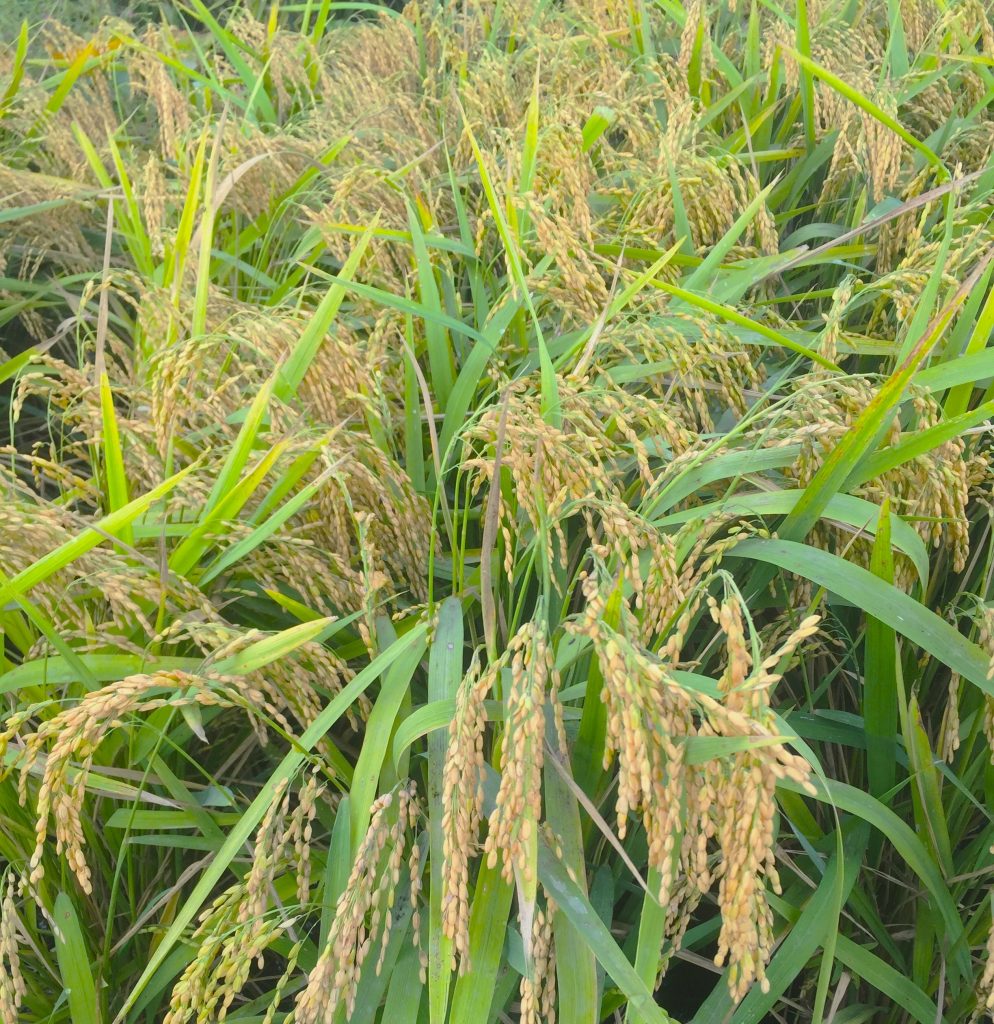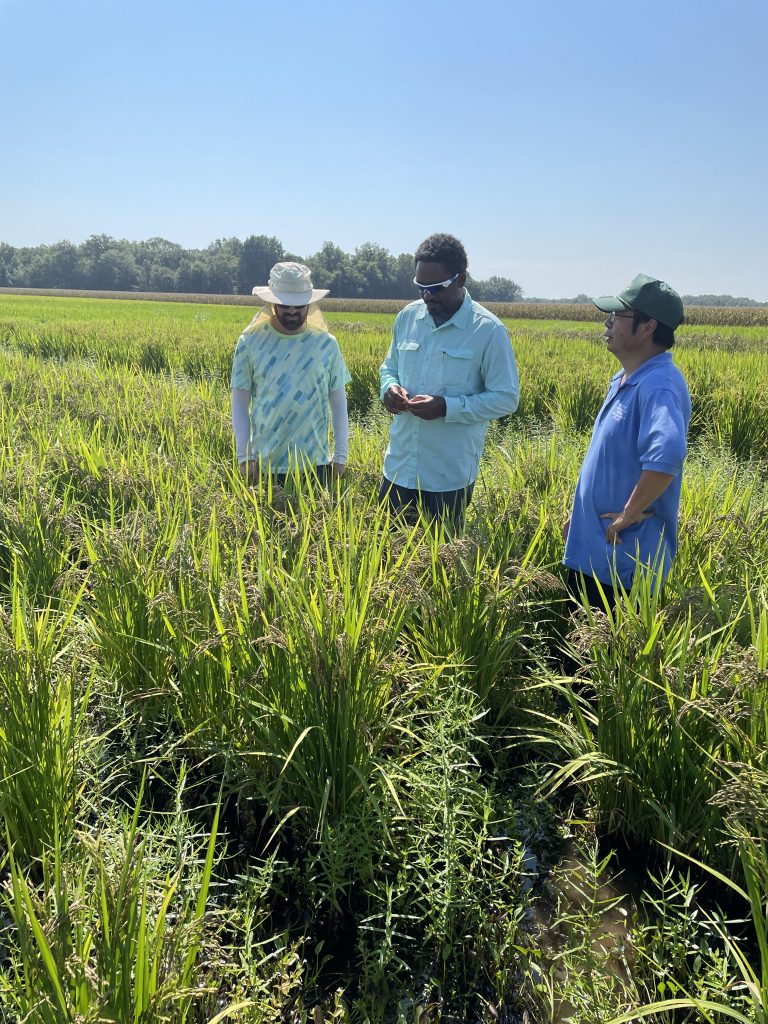Cereals and Pseudocereals
Rice – Blast Resistance Genes
GENETIC MARKERS DEVELOPED FROM A CLONED MAJOR BLAST RESISTANCE GENE RESULTED IN MORE THAN A DOZEN U.S. BLAST RESISTANT RICE VARIETIES AND GERMPLASM LINES
Yulin Jia; Melissa H. Jia; and Jeremy Edwards
Dale Bumpers National Rice Research Center, 2890 Highway 130 E, Stuttgart, Arkansas 72160.
Corresponding author: yulin.jia@usda.gov
OUTLINE
1. SUMMARY

After the rice blast pandemics in the 1980s, host-plant resistance to blast became an essential trait for new rice (Oryza sativa L.) cultivars. In 2002, USDA scientists found that Pi-ta was the major gene contributing to blast resistance in two highly resistant varieties, ‘Katy’ and ‘Tetep’, and therefore developed three genetic markers to identify that gene. A second crucial gene, Ptr, and genetic markers for it were discovered in 2018. This has enabled a marker assisted approach when selecting for blast resistance, significantly increasing the speed and accuracy of rice breeding. Thanks to the discovery of these genes and markers for them, dozens of other blast resistant rice varieties have been developed and released in the United States.
The goals were:
- to develop genetic markers for major blast resistance gene identification and integration into resistant U.S. rice varieties
- to uncover the molecular mechanism of rice blast disease resistance
Download a printable fact sheet by clicking the image below.
2. PROBLEMS ADDRESSED

Rice blast is one of the most damaging rice diseases in the world. Yield loss from this fungal infection depends on varietal susceptibility, the degree of infection, and the timing of fungicide application. Some yield losses associated with blast outbreaks have reached 50% or more. Although fungicides are available to mitigate blast outbreaks, such chemical treatments can be costly.
3. SOLUTIONS DEVELOPED

To better understand this rice blast resistance, USDA Agricultural Research Service (ARS) scientists performed allelic DNA sequence analyses of two resistant rice varieties: the Vietnamese landrace ‘Tetep’ and the U.S. cultivar ‘Katy’. They determined that the major blast resistance gene, Pi-ta, in ‘Katy’ was inherited from ‘Tetep’, and in 2002 they developed three genetic markers from portions of Pi-ta (Jia et al., 2004). These markers have accelerated breeding for improved blast resistance, resulting in several new U.S. rice cultivars.
In 2018, ARS scientists with university collaborators discovered another blast resistance gene, Ptr, nearby Pi-ta in the genome of ‘Tetep’ (Zhao et al., 2018). Ptr confers broad spectrum blast resistance and is required for Pi-ta to function. This new class of resistance gene represents a remarkable host-plant mechanism to protect rice against the deadly pathogen. Uncovering the specific molecular mechanism behind rice blast disease resistance is essential for improving marker assisted breeding, and further enables the development of new sources of host-plant resistance through gene editing.
Collaborators involved in developing solution:
- Haijun Zhao, Yulin Jia, Melissa H Jia, and Jeremy Edwards, Dale Bumpers National Rice Research Center, Stuttgart, Arkansas, USA
- Barbara Valent, Kansas State University, Manhattan, Kansas, USA
- Xueyan Wang and Yeshi Wamishe, University of Arkansas, Stuttgart, Arkansas, USA
- Bastian Minkenberg and Yinong Yang, Penn State University, University Park, Pennsylvania, USA
- Jiangbo Fan and Guo-Liang Wang, Ohio State University, Columbus, Ohio, USA
4. IMPACT
The cost of mitigating rice blast outbreaks via fungicide application can exceed $28 per acre—a major expense for U.S. growers, who grow 2% of world rice production. For the past two decades, the U.S. and global rice industries have saved billions of dollars by growing varieties with blast resistance from the Pi-ta and Ptr genes.
5. GERMPLASM
‘Tetep’ (PI 431324) and ‘Katy’ (PI 527707) are both maintained at the USDA National Plant Germplasm System’s (NPGS) National Small Grains Collection in Aberdeen, Idaho.
6. REFERENCES
Jia Y, Wang Z, Fjellstrom RG, Moldenhauer KA, Azam MA, Correll J, Lee FN, Xia Y, Rutger JN. 2004. Rice Pi-ta gene Confers Resistance to the Major Pathotypes of the Rice Blast Fungus in the United States. Phytopathology 94:296-301. https://doi.org/10.1094/PHYTO.2004.94.3.296
Zhao H, Wang X., Jia Y, Minkenberg B, Wheatley M, Fan J, Jia MH, Famoso A, Edwards JD, Wamishe Y, Valent B, Wang G-L, Yang Y. 2018. The rice blast resistance gene Ptr encodes an atypical protein required for broad-spectrum disease resistance. Nature Communications 9:2039. https://doi.org/10.1038/s41467-018-04369-4
7. CHAPTER INFORMATION
Citation: Jia Y, Jia MH, Edwards J. 2024. Rice – Blast Resistance Genes. In: Volk GM, Chen K, Byrne P (Eds.) Plant Genetic Resources: Success Stories. Fort Collins, Colorado: Colorado State University. Date accessed. Available from https://colostate.pressbooks.pub/pgrsuccessstories/chapter/rice-blast-resistance-genes/
Content originally submitted: February 18, 2024
Date of publication: August 13, 2024
USDA is an equal opportunity provider, employer, and lender. Mention of trade names or commercial products in this article is solely for the purpose of providing specific information and does not imply recommendation or endorsement by the U.S. Department of Agriculture.


